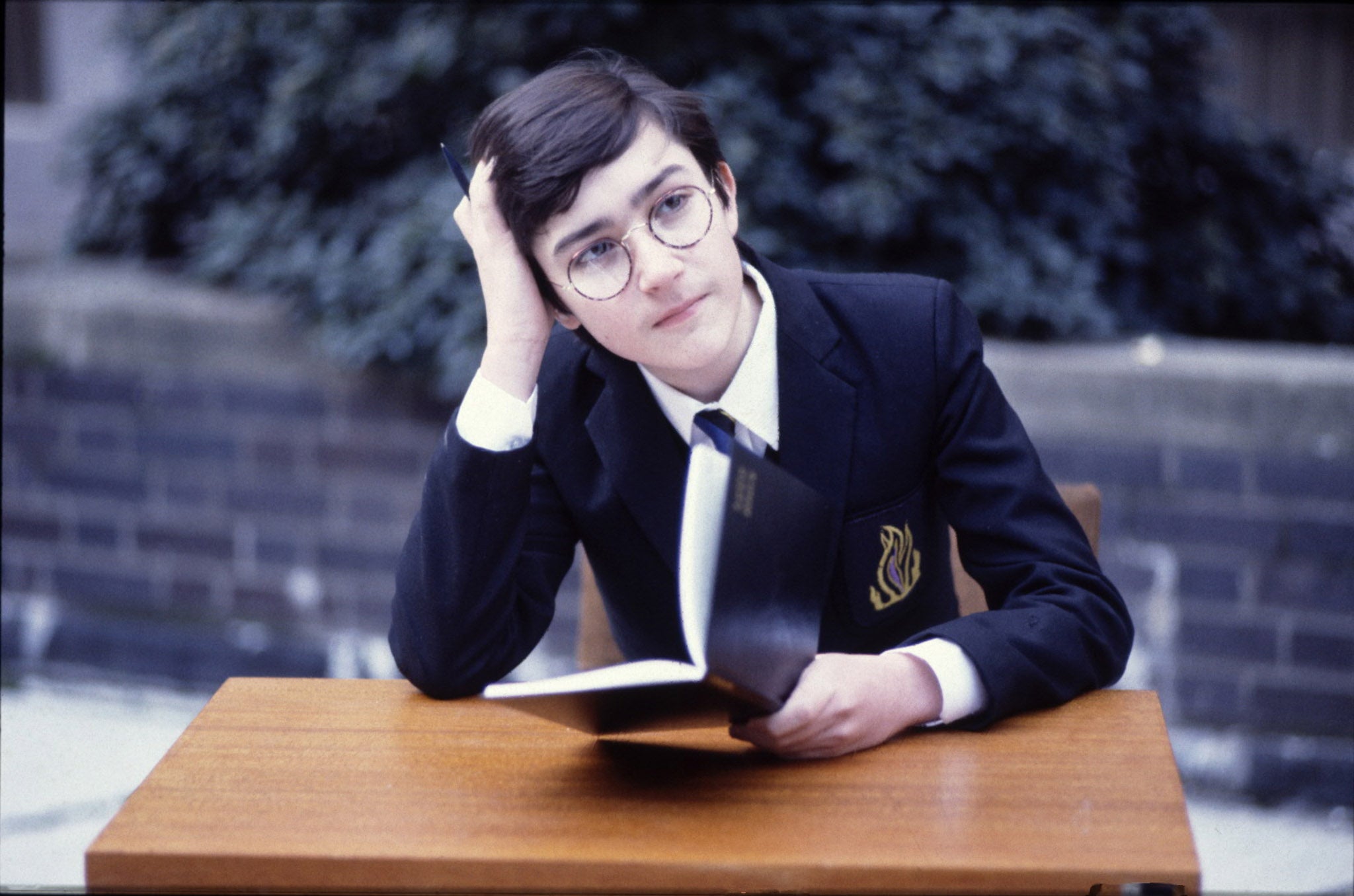What I learnt about boys from the genius comic creation that was Sue Townsend’s Adrian Mole
The author’s death takes me back to the joy that was the hapless teenager’s secret diary

Has there ever been a more sublimely comic vignette of teenage angst than the sorry tale of Adrian Mole and his Noddy wallpaper? In a series of diary entries over a torrid week one May, Mole, aged 13¾, decides that he can no longer sleep in a room papered with Enid Blyton characters (“positively indecent”) and paints his walls a vinyl, silk-finish black. It does not work out well for him.
“Wednesday May 27th. Third coat. Slight improvement, only Noddy’s hat showing through now.
Friday May 29th. Went over hat bells with black felt-tip pen, did sixty-nine tonight, only a hundred and twenty-four to go.”
It is a perfect little episode, encapsulating all of the growing pains, absurd posturing, lonely obsessions, disappointments and stationery-related woes of life as a teenager and would-be rebel. As literary set-pieces go, it is up there on the snort-out-loud scale with Lucky Jim panicking over Mrs Welch’s burned bedsheets or Gussie Fink-Nottle’s slurred speech at Market Snodsbury School.
Sue Townsend, who died on Thursday, aged 68, must surely be remembered alongside Amis and Wodehouse as one of British literature’s great humorists. For children of the 1980s, the names Pandora and Ashby de la Zouch will forever bring to mind a spotty young man with a head full of intellectual pretensions and a ruler down his trousers. The first two instalments of the teenage diaries made Townsend the best-selling novelist of that decade and she returned, without coyness or reluctance, to her best-loved creation again and again. Until the end, when meeting fans, she would sign her name in their books Mole-style: “Sue Townsend, aged 66 1/4”.
Adrian Mole, the hero of eight volumes between 1982 and 2009, sits somewhere between naughty schoolboy Nigel Molesworth and naughty singleton Bridget Jones in the comic diary canon, but unlike the former – forever pickled in (glorious) puerile boyhood – and the latter – who lost her voice in the clamour of her creator’s success – Mole matured, morphed and grew in unexpected directions, like one of the zits on his adolescent chin. Down the years, he became newt conservation officer, chef, antiquarian bookseller, husband, father and ultimately cancer patient, living in a converted pigsty.
The first volume - with its on-the-cusp cover of a misty bathroom mirror, shaving brush and Noddy toothbrush – remains the best. All teenage life is here - from acne to bullies, divorce to tonsillitis, pornography to pocket money. Some of the entries are beautifully prosaic. “7am Boarded coach. 7.05 Ate packed lunch, drank low calorie drink. 7.10 Coach stopped for Barry Kent to be sick”. Others are poetic, of course, like his dramatic ode to a dripping tap (“For the want of a washer the carpet will spoil/ Then for another my father will toil.”) or his many missives to Pandora, who always inspired his most florid outpourings - “Pandora! I adore ya. I implore ye. Don't ignore me”. He is priggish, puritanical (but only when it comes to his parents. He and Saffy from Ab Fab would have got on famously) but, thanks to his innocence, still endearing.
There are other great teenage characters – the terminally bored Holden Caulfield, Judy Blume’s emotionally articulate, sexually precocious heroines - but Mole always felt real, still does to those who grew up with him. He experiments with sex and drugs, but ineptly. He buys Big and Bouncy and Grow It Big cream and has his first wet dream after flipping through his mum’s feminist literature (“So my mother was right about The Female Eunuch. It has changed my life.”). When he tries sniffing glue he gets his nose stuck to a model aeroplane. That never happens in the glossy world of Glee. Entirely un-self-aware, he revels in being a misunderstood intellectual and an unrequited lover. It’s the same gauche combination that has made Hannah Horvath the voice of a new generation in Girls today.
Unlike Girls, Mole’s diaries crossed all boundaries – of gender, class and age. Reading them as a young girl was an illuminating, more often hilarious insight into how boys probably thought. Reading them now, it is the sly undercurrents of his interactions with his parents and other adults that make me giggle. He is a true crossover phenomenon, so much funnier and more flawed than Harry Potter.
It helped that his readers grew up with him. I am the same age as the first book. Today its references to Hush Puppies, joss sticks, Vimto and snaplock executive briefcases are deliciously nostalgic. More than that, the books are a remarkable, comic, chronicle of an era. Townsend’s brilliance lay not only in her ability to capture a male voice from puberty to middle-age, but also in the way she played out Mole’s personal struggles against a wider political backdrop, whether Thatcherism and Greenham Common or New Labour and the Iraq War.
What might an austerity-era Adrian have looked like? Townsend was reportedly writing a new volume when she died. If so, it will likely be published now, finished or not. In 20 years or so, someone might decide to re-boot Mole for a new generation. I have no doubt that he will still be as funny and true as he was when he first opened his diary on 1 January 1981 and wrote the words “Eight days have gone by since Christmas Day but my mother still hasn’t worn the green lurex apron I bought her for Christmas. She will get bathcubes next year.”
www.twitter.com/alicevjones
Join our commenting forum
Join thought-provoking conversations, follow other Independent readers and see their replies
Comments
Bookmark popover
Removed from bookmarks